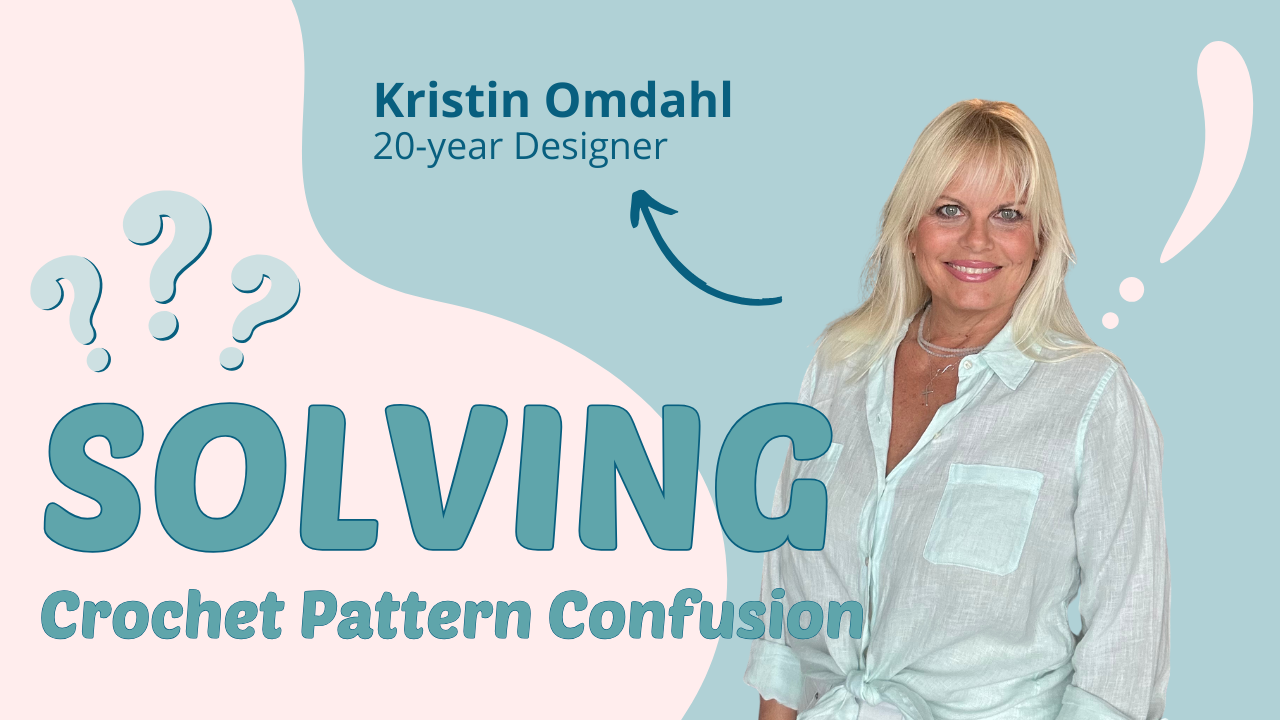Blog, Crochet, How to Crochet
Solving Crochet Pattern Confusion: A Beginner’s Guide to Written Instructions, Charts, and Tutorials
Crochet patterns can feel like a secret code when you’re starting out. Maybe you’ve opened a pattern book and stared at rows of abbreviations. Or you’ve seen a beautiful stitch chart that looked more like hieroglyphics than yarn. Or maybe you’ve tried to follow along with a video, only to get lost when you paused to count stitches.
If you’ve ever felt confused—you’re not alone. And the good news? There are multiple ways to read and understand a crochet pattern. In fact, written instructions, charts, and video tutorials all tell the same story—just in different languages.
In this guide (and video series), I’ll demystify crochet pattern confusion and help you build confidence in using any learning style.
✍️ Written Instructions: The Language of Abbreviations
Written instructions are the most traditional way patterns are shared. They use abbreviations like ch (chain), dc (double crochet), or sc blo (single crochet through back loop only).
Pros:
-
Universal and easy to copy/paste.
-
Great for linear thinkers who like step-by-step detail.
Cons:
-
Can feel overwhelming at first.
-
If you lose your place in the row, it’s easy to get mixed up.
️ Crochet Charts: A Picture Worth a Thousand Stitches
Charts use symbols to represent stitches. Each symbol corresponds to a stitch (like “x” for single crochet, or “◯” for chain). When laid out together, they form a map of the pattern.
Pros:
-
Visual learners can “see” the fabric before crocheting it.
-
Helpful for lace or motif patterns where placement matters.
Cons:
-
Can be intimidating if you don’t know the symbols yet.
-
Reading direction (rounds vs. rows) can confuse beginners.
Video Tutorials: Learning in Motion
Video tutorials walk you through the stitches in real time. They let you watch hands move and hear explanations.
Pros:
-
Perfect for beginners—no guesswork.
-
Pause, rewind, and slow down as needed.
Cons:
-
Hard to skim quickly for reference.
-
Relies on screen/device access, not ideal for offline crafting.
Putting It All Together
The magic happens when you realize that all three formats—written, chart, and video—are simply different windows into the same project.
Here’s how you can practice cross-referencing:
-
Pick a simple stitch pattern (like a 1-row repeat).
-
Read the row in written form.
-
Look at the chart symbols for that row.
-
Watch the tutorial for the same row.
Do this a few times, and you’ll start to see the connection. Suddenly, abbreviations aren’t so scary, and charts become a helpful shortcut.
Free Patterns to Practice
Want to try it right now? Here are free stitch patterns with written instructions + charts + video tutorials you can practice with:
Each pattern comes with all three learning formats so you can compare and build your skills.
Watch the Video Series: Solving Crochet Pattern Confusion
To help you even more, I’ve created a brand-new video series where we walk through real examples together.
Subscribe to my YouTube channel so you don’t miss each new episode!
✨ Final Thoughts
Every crocheter learns differently. The key is discovering the method—or combination—that makes you feel comfortable. With time, you’ll move fluidly between written, chart, and video, gaining confidence in any project you pick up.
You don’t have to choose just one. Crochet is about freedom, creativity, and joy—and there’s always more than one way to learn.
Ready to practice? Download a free pattern today and let’s untangle crochet pattern confusion together.
About Kristin Omdahl
When she’s not writing, Kristin shares crochet and knitting designs, recipes, and behind-the-scenes glimpses of her creative process with her global community on Patreon.


